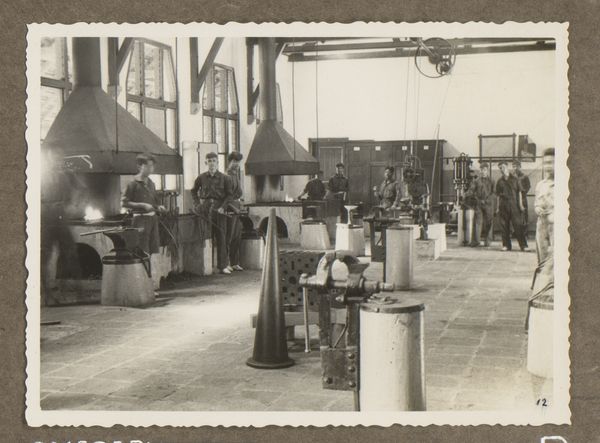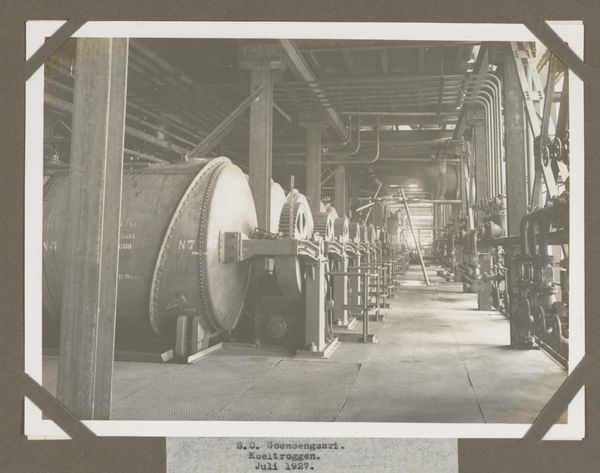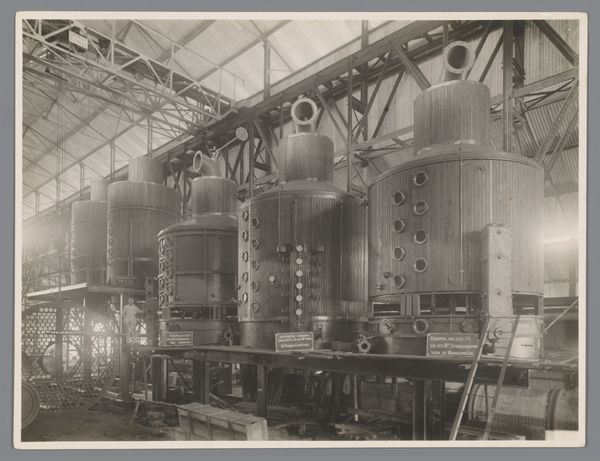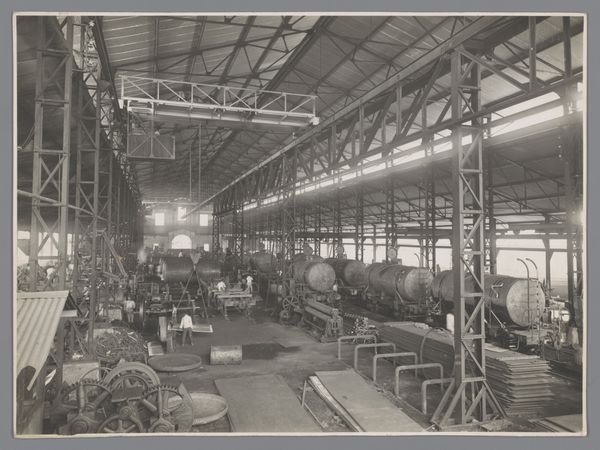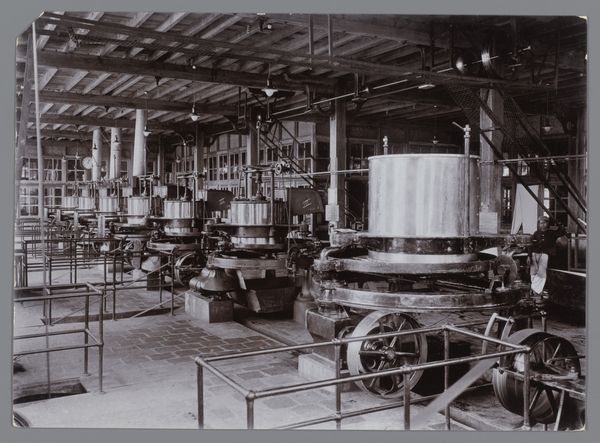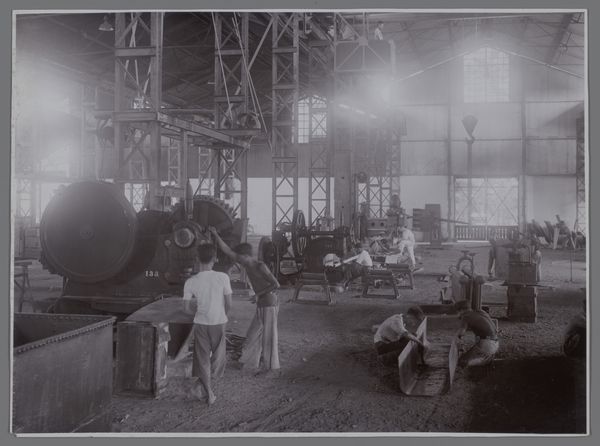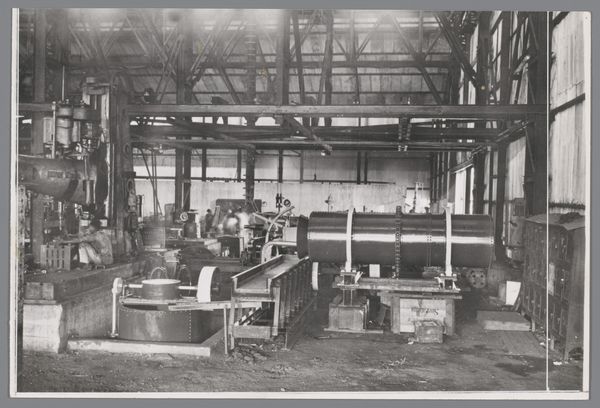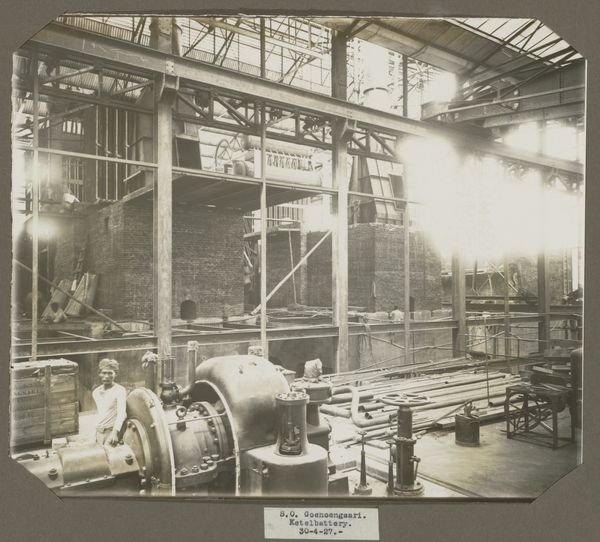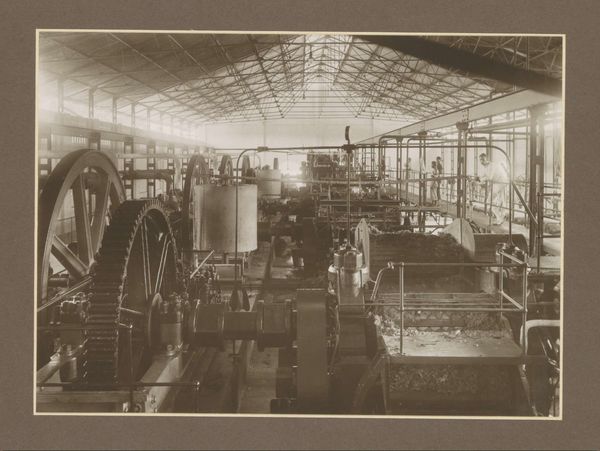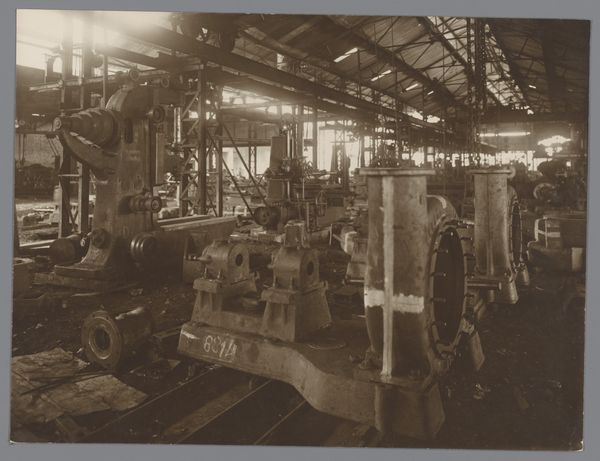
print, photography
# print
#
photography
#
historical photography
#
realism
Dimensions: height 170 mm, width 238 mm
Copyright: Rijks Museum: Open Domain
Curator: This intriguing photograph, titled "Theefabriek", potentially dating back to 1937, offers us a glimpse into the Braat Machine Factory in Soekaboemi. What strikes you immediately about this image? Editor: Honestly? This place hums with a quiet intensity. It’s a cathedral of industry, captured in a stark, almost ghostly light. You can almost hear the clatter of the machines and smell… well, what exactly did they manufacture here? Curator: "Theefabriek" suggests it was likely involved in tea production. It is, perhaps, a documentation of the factory’s interior, focusing on the machinery. Think of the cultural context: Soekaboemi, then part of the Dutch East Indies, and the photograph as a record of colonial industrial endeavors. Editor: Right, so this isn't just about machinery; it's about the people, the labor, the power dynamics humming beneath all that metal and motion. There's something unsettling about the absence of figures, though. It's all poised, ready to go, but empty. Like a stage set for a drama yet to unfold. Curator: That's an insightful reading. The photograph could be interpreted as a reflection on the scale and ambition of industrialization. The image itself highlights how such imagery functioned as evidence of economic progress. Editor: Evidence, or propaganda, maybe? It’s got a certain sterility to it. Almost feels posed, calculated to impress, not necessarily to reveal truth. Look at those repetitive shapes and textures; that interplay of light and shadow almost romanticizes the harshness of the industrial world. The artist created drama out of function. Curator: Indeed. As a visual record, its neutrality is suspect. These types of images, despite claiming objectivity, invariably serve specific social and political functions. What do you make of the print quality and monotone coloring? Editor: Well, monochrome strips away distraction, leaving you face-to-face with the structure, the bones of the place. The graininess, that old photo texture, it all adds a layer of nostalgia. You can’t help but imagine what this place was *actually* like – not what it was intended to represent. It humanizes the whole thing somehow. Curator: It becomes a layered artifact, speaking both of industry and the politics of its time. Thank you, I find that perspective helps add another lens through which one might reflect upon "Theefabriek". Editor: Absolutely. It's the tension between that official narrative and the unspoken stories hidden in plain sight, which make this so fascinating.
Comments
No comments
Be the first to comment and join the conversation on the ultimate creative platform.
